Hear how Elite Mold & Engineering used Mantle’s automated toolmaking technology to dramatically reduce tooling lead times by eliminating all sinker EDM for a 2-mold, 9-insert project.
See a live video of how Mantle’s automated toolmaking process works.
Learn how Heyco Products uses Mantle’s metal 3D printing technology for toolmaking to accelerate product development, reduce lead times, solve labor challenges, and increase toolroom capacity.
Learn why Westminster Tool chose Mantle’s automated toolmaking technology as the metal 3D printing technology to integrate into their toolmaking operations.
This video explains how Mantle’s TrueShape process produces precision tooling with exceptional accuracy and surface finish.
Learn how Heyco Products uses Mantle’s metal 3D printing technology for toolmaking to accelerate product development, reduce lead times, solve labor challenges, and increase toolroom capacity.
Mantle has a metal 3D printing process focused on injection mold tooling. Peter Zelinski from Additive Manufacturing media visited Mantle’s facility in California, and gives this explanation of the steps in the process.
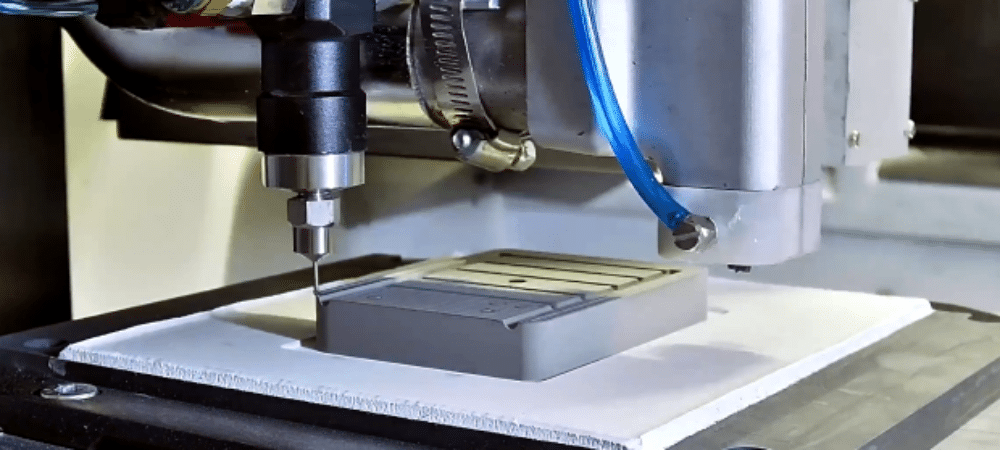
Mantle’s TrueShape technology is specifically designed for 3D printing tooling and delivers the accuracy, surface finish, and tool steel properties required for demanding tooling components
While many metal 3D printing methods have established a niche in their respective applications tooling has long been a target for various approaches. This white paper serves as a guide to understanding the major metal 3D printing technologies and their role in printing injection mold tooling.
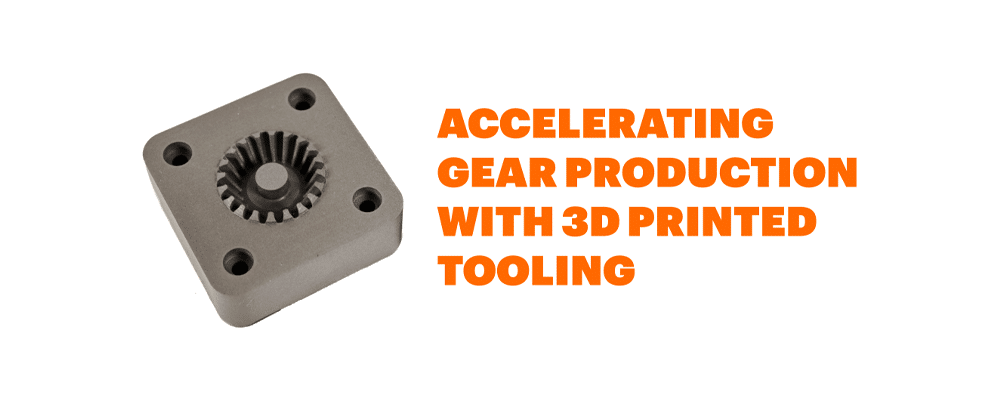
The process of prototyping plastic gears has traditionally been an expensive and time-consuming endeavor that inhibits the speed of product development and limits companies’ agility in meeting customer demands.
3D printed tooling offers great promise in accelerating the development of plastic gearing, dramatically reducing lead times and costs.
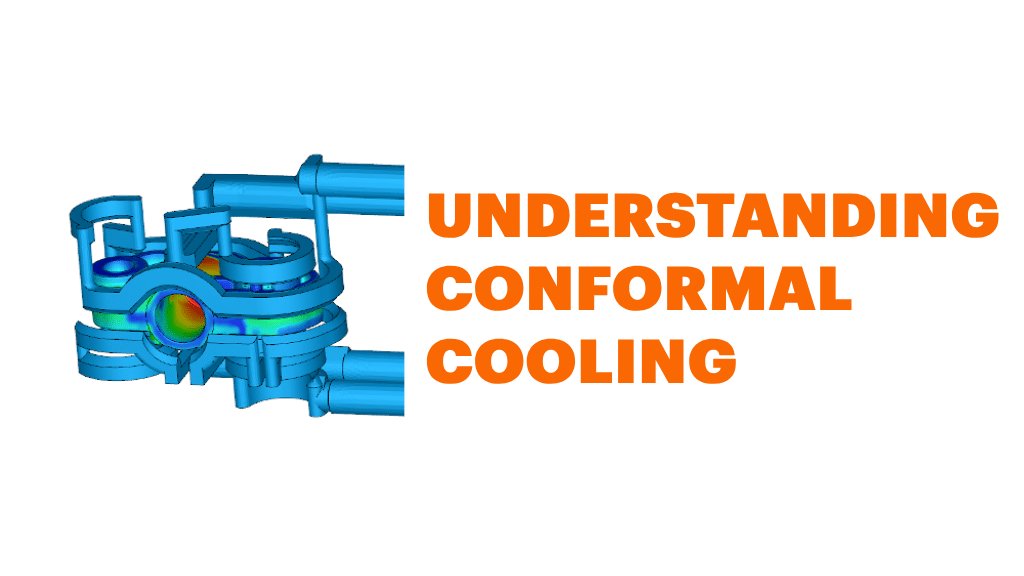
For the injection molding industry, conformal cooling has historically offered great promise, but come with manufacturing challenges. This white paper explores the advantages of conformal cooling and the new possibilities that Mantle’s metal 3D printing technology brings and how customers are ut
Tooling components like cavities, cores, and sprue bushings benefit greatly from automated production with metal 3D printing technology.
Download the white paper to learn how molders, tool shops, and OEMS are using Mantle to:
Hosted by Plastics Technology, you’ll hear directly from Paul Patrash of Elite Mold & Engineering and Ethan Rejto of Mantle on how Mantle is reinventing moldmaking.
Join us for an interactive conversation with Mike Skaja, former Mold Maker and current Mantle team member, as he shares his expertise from over a decade in the tooling industry.
Join us for an exclusive webinar with Mantle co-founders Ted Sorom and Steve Connor as they share their journey of founding a company focused on precision tooling.
Letting end-use parts and production methods stay the same, Mantle’s revolutionary technology can automate up to 95% of a tool build and add value throughout the process – sign up to learn how.
Reducing product development cycles is critical to success in today’s competitive manufacturing landscape. This webinar will explore how rapid tooling dramatically accelerates product development by leveraging cutting-edge technologies like metal 3D printing for injection molds. Attendees will learn how Mantle’s technology enables manufacturers to create production-quality steel tools with unprecedented speed, precision, and durability to produce production equivalent prototype molded parts.
Rapid tooling allows teams to iterate designs faster, validate part functions earlier, and scale into production seamlessly from prototype to production.
If plastic parts are strategic to your organization, this is a must-attend event to learn how to bring products to market faster.
Key Takeaways:
In this webinar, Nicolet Plastics will share real-world examples of utilizing Mantle’s metal 3D printing to reduce tooling lead times and lower costs compared to traditional mold building. Learn how this cutting-edge technology drives value for Nicolet Plastics’ existing customers while also winning them new business.
Hear from Prescott Sutter, Mantle’s Head of Customer Success and Applications Engineering, as we cover one of the most requested topics—understanding Mantle part costs and throughput.
Prescott will break down critical insights, including:
We sit down with Mantle’s Director of Process Engineering, Michael Kottman, who will share specifics on how our process engineering team developed Mantle’s print process specifically for the production of injection mold tooling.
Heyco Products is a leader in wire protection products. It considers its vertical integration of molding and toolmaking a competitive advantage, allowing it to respond more quickly to the market. Heyco faces significant challenges in producing and sourcing mold tooling, like many manufacturers. By implementing metal 3D printing technology for toolmaking, they increase the capacity of its toolroom, lowering lead times and costs without needing additional toolmakers while attracting and retaining the next generation of toolmaking talent.
Join us as we sit down with Micheal Belmont and Mustafa Hossaini to discuss firsthand how they use metal 3D-printed tooling to win business.
The toolmaking industry is facing significant labor shortages, yet the demand for domestic tooling is on the rise. This webinar will explore data around toolmaker labor challenges and discuss how toolshops and molders leverage technology to thrive and secure their future in this challenging landscape.
Hear first-hand from General Pattern, an injection molder with in-house tooling services and over 100 years of experience, is addressing the labor issue, increasing toolmaking capacity and helping OEMs accelerate product development by integrating Mantle’s 3D printer to automate its toolmaking processes.
Join Mantle, Westminster Tool, and Medical Product Outsourcing for a free webinar on how OEMs use metal 3D printing to accelerate product development by printing steel injection mold tooling.
In this presentation, we will discuss real-world examples of how manufacturers use metal 3D printing technologies for tooling. Real data on cost and lead time savings compared to traditional moldmaking processes will be presented.
Unlike traditional metal 3D printing systems, Mantle’s 3D printer is designed to be deployed within existing facilities without requiring extensive modifications or safety measures. This webinar will dive into nine key aspects of Mantle’s printing technology that facilitate this ease of integration and highlight its promise to redefine tooling.
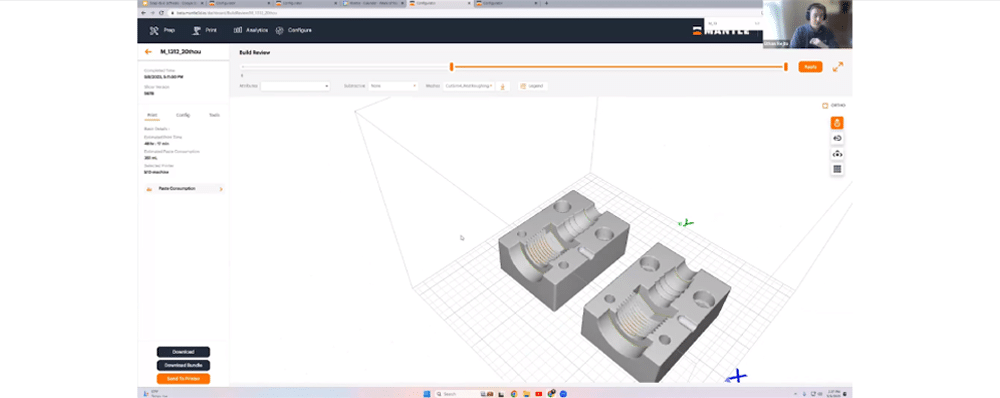
Join Mantle for a deep dive into our TrueShape software. Mantle’s software automatically does all programming for additive and subtractive toolpaths, removing the time-consuming and costly CAM step from tool building. Since the TrueShape process alternates between printing material and machining material, parts can have detailed, deeply inset features produced with ease.
Learn how manufacturers shave months off their product development cycles by producing steel tools during the prototyping stage. Steel tools allow for production-quality molded parts early in development for functional prototyping, trials, and process validation. After the design is locked, these tools can be used to bridge into production.

Nicolet Plastics, a full-service, custom plastic injection molder, joins to give a first-hand overview of how Mantle’s technology is evolving their business.
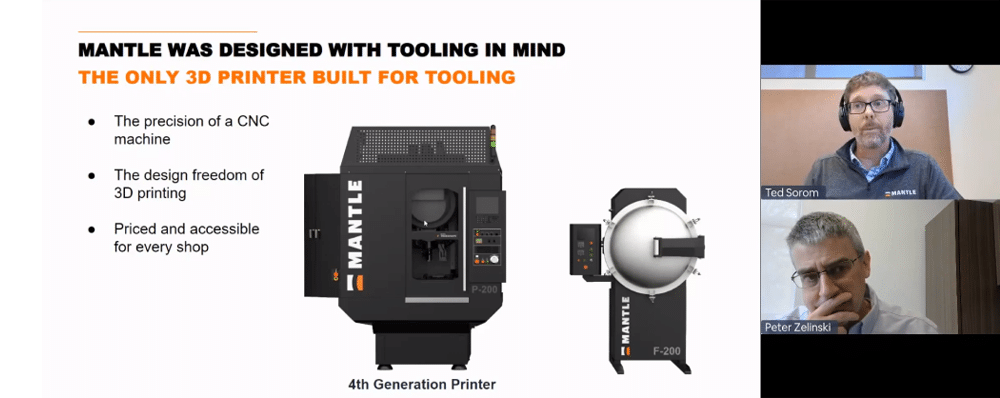
Join Mantle’s CEO and co-founder, Ted Sorom, and Additive Manufacturing editor-in-chief, Pete Zelinski, for a discussion on the metal 3D printing landscape for injection mold tooling.
Ted will share why he started Mantle to address the specific challenges of tooling, talk about the latest advancements in the industry, and discuss examples of how injection molders, OEMs, and tool shops are automating their toolmaking with Mantle.

In this webinar, you will learn how tool shops are using Mantle’s hybrid metal 3D printing system to reduce lead times and costs by eliminating or reducing toolmaking operations.
Review the results of extensive testing of how Mantle’s printed H13 performs and compares to traditional H13 tool steel. Results include:
420 Stainless Steel is the ideal tooling material when high-hardness is needed with corrosion resistance.
Mantle’s H13 material acts like standard H13 tool steel and can be hardened to greater than 50 Rockwell C.